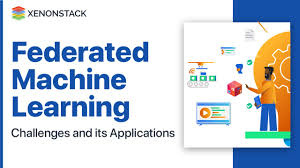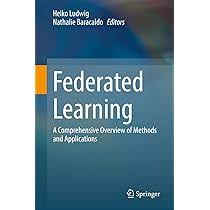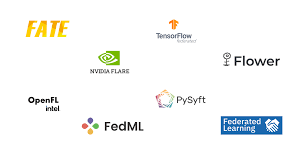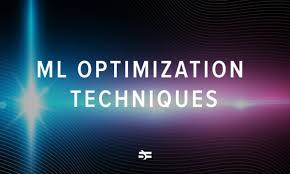comprehensive guide to Key Frameworks and References in ML System Optimization 2024
The realm of Machine Learning (ML) Optimization has seen tremendous advancements with the rise of new frameworks and tools that make training models more efficient, secure, and scalable. As ML continues to grow in applications from healthcare to finance, these advancements play a vital role in ensuring that models are not only accurate but also computationally efficient. In this blog, we will delve into some of the most impactful ML frameworks, key notations used in federated learning (FL), and references that have shaped the field of ML system optimization.
Understanding the Role of Federated Learning (FL) in ML Optimization

Federated Learning (FL) is a decentralized machine learning method that enables multiple devices or clients to collaboratively learn a shared prediction model while keeping the data localized. It has emerged as a solution to privacy concerns while still leveraging the power of machine learning. In federated learning, data does not need to leave the client’s device, reducing the risk of exposure and improving security.
Federated Averaging (FedAvg) is the most commonly used algorithm in FL. The idea behind FedAvg is simple: the central server averages the locally computed updates from each client and sends back the aggregated result. This method is efficient in terms of communication and can work with non-IID (Independent and Identically Distributed) data as well.
Key Notations in Federated Learning

In ML optimization, especially in FL, several notations are used to represent various components of the model, clients, and data involved in the training process. Some key notations include:
- Ci: Data owner or client in the federated system.
- Di: The training data of client Ci.
- Li: Local learning model of client Ci.
- G: The global learning model, which is updated after training rounds.
- t: Denotes the round of learning.
- Gt: Parameters of the global model at the t-th round.
These notations form the basis of the algorithmic structure that FL and other distributed machine learning frameworks follow.
Federated Learning Frameworks

Several frameworks have been developed to support the implementation and deployment of federated learning models. These frameworks provide standardized tools and libraries to streamline the process of collaborative model training. Here are a few widely-used frameworks:
- TensorFlow Federated (TFF)
- TFF GitHub: A framework developed by Google to help researchers and practitioners implement federated learning with TensorFlow. TFF allows users to build and evaluate machine learning models in a federated setting.
- PySyft
- PySyft GitHub: An open-source library that extends PyTorch to enable privacy-preserving machine learning. PySyft facilitates federated learning and supports secure multi-party computation (SMC), making it ideal for privacy-sensitive applications.
- FATE (Federated AI Technology Enabler)
- FATE GitHub: A framework developed by Federated AI Technology that focuses on providing federated learning solutions for large-scale deployments. FATE supports both vertical and horizontal federated learning.
- PaddleFL
- PaddleFL GitHub: A federated learning framework built on PaddlePaddle. It provides a suite of algorithms for heterogeneous models and multi-party secure computation.
- Flower
- Flower GitHub: An easy-to-use federated learning framework that provides tools for federated model training across different frameworks like TensorFlow, PyTorch, and more. Flower allows seamless integration with existing machine learning systems.
- Xaynet
- Xaynet GitHub: A federated learning framework that focuses on privacy and scalability, providing tools for building and deploying federated models across devices.
- IBM Federated Learning
- IBM FL GitHub: A framework developed by IBM to enable federated learning on multiple devices while ensuring data privacy and security.
Additional Key References for ML Optimization

ML optimization continues to advance with new algorithms, techniques, and frameworks. Key publications that have contributed to the growth of this field include:
- Deep Learning by Yann LeCun, Yoshua Bengio, and Geoffrey Hinton (2015)
This paper is a foundational work in deep learning, outlining the evolution of neural networks and the breakthroughs that have shaped modern ML systems. - Challenges for Machine Learning on Distributed Platforms by T. Goldstein (2018)
This talk delves into the complexities of scaling machine learning algorithms across distributed platforms and explores solutions for communication efficiency. - Federated Learning: Strategies for Improving Communication Efficiency by J. Konečný, H. B. McMahan, et al. (2016)
A key paper that introduced federated learning and strategies for enhancing communication efficiency in decentralized settings. - Federated Learning by Q. Yang, Y. Liu, et al. (2019)
This book provides an in-depth understanding of federated learning, discussing the various algorithms, applications, and challenges in distributed learning. - Challenges and Solutions in Blockchain-Empowered Federated Learning by J. Zhu, J. Cao, et al. (2023)
This work explores the potential of integrating blockchain technology with federated learning, aiming to address issues of data integrity and privacy. - Hardware for Machine Learning: Challenges and Opportunities by V. Sze, Y.-H. Chen, et al. (2017)
A critical paper that discusses the need for specialized hardware, like GPUs and ASICs, to efficiently run machine learning models, especially deep learning.
Conclusion: The Future of ML System Optimization
As machine learning models grow in complexity, system optimization becomes increasingly important. Federated learning, in particular, offers solutions for privacy, security, and efficiency, making it a key technology in the future of machine learning. By utilizing frameworks such as TensorFlow Federated, PySyft, and FATE, researchers can optimize machine learning models while ensuring data privacy and enhancing collaboration across multiple devices.
With continued advancements in federated learning algorithms, hardware accelerators, and optimization techniques, the future of ML is both promising and transformative. This ecosystem will continue to evolve, shaping the next generation of machine learning applications across various industries.